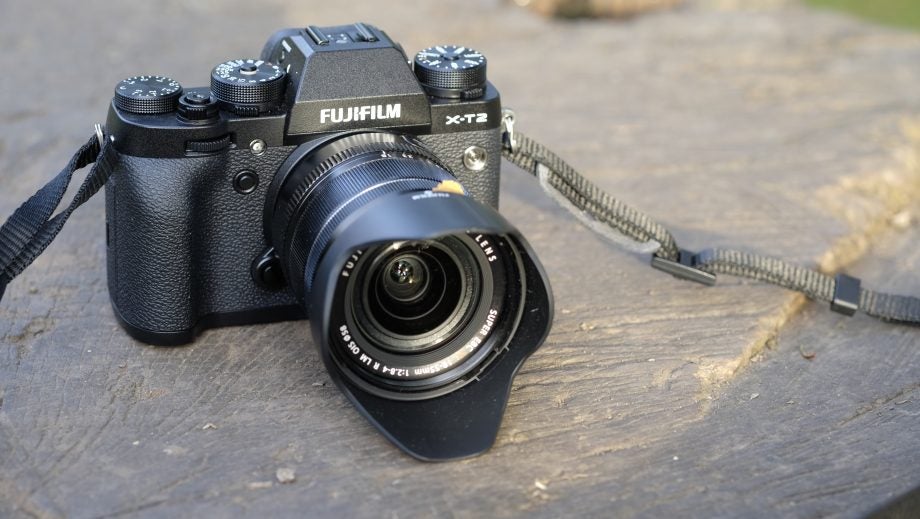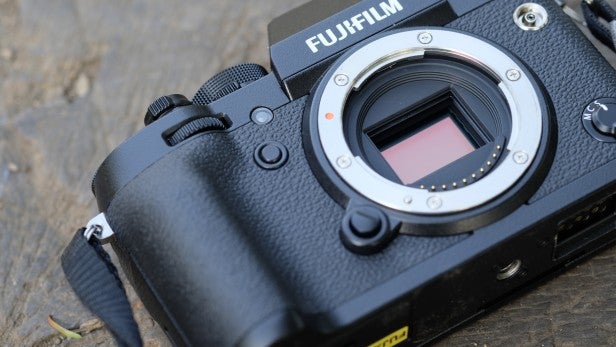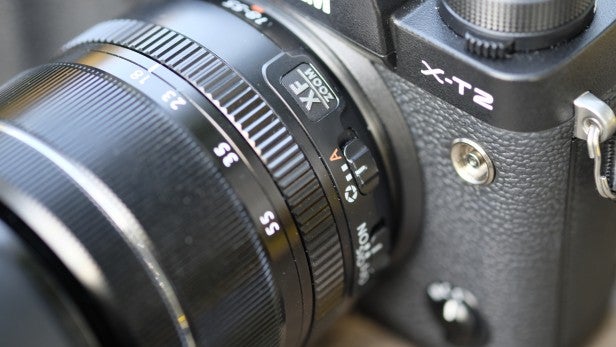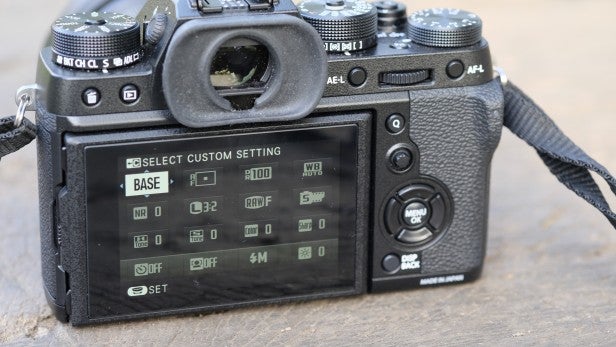Fujifilm X-T2 Review
Fujifilm X-T2
Fuji's made another winner

Sections
- Page 1 Fujifilm X-T2 Review
- Page 2 Performance, image quality and conclusion Review
Verdict
Pros
- X-Trans CMOS sensor
- Great tracking performance
- Useful electronic viewfinder
- Capable of 4K video shooting
Cons
- No touchscreen
- Requires battery grip for top performance
- No in-body image stabilisation
Key Specifications
- Review Price: £1399.00
- 24.3MP X-Trans APS-C CMOS III sensor
- 4K video recording
- Dual SD card slots
- Up to 1/32000 shutter speed (using electronic shutter)
- 3.0-inch, 1,040k-dot tilting LCD screen
- 0.5-inch, 2.36-million dot OLED viewfinder
- Built-in Wi-Fi
- 507g (including battery and memory card)
- 132.5mm x 91.8mm x 49.2mm
What is the Fujifilm X-T2?
The X-T2 is Fujifilm’s second top-end compact system camera, designed to sit alongside the X-Pro2. It features a 24.3-megapixel X-Trans CMOS sensor, which is APS-C size. Like other X-Trans CMOS sensors, it doesn’t have an anti-aliasing filter in front of it, making it well equipped to deal with resolving detail.
It also has an array of advanced features that make it appealing to both high-end enthusiasts and full-time professionals. Those include improved AF, 4K video recording, durability and an optional battery grip that can boost performance.
Related: Best cameras

Fujifilm X-T2 – Build and Handling
Fuji’s two top-of-the-range cameras will appeal to different people. The X-T2 sports a chunkier, more traditional DSLR shape, compared to the flatter, rangefinder style of the X-Pro2.
The good news for enthusiast photographers is that there are dials and buttons aplenty, each providing quick access to a range of different settings.
On the front of the camera is a switch to quickly flick between single AF, continuous AF, or manual focus. Also here, just below the shutter-release button, is a scrolling dial. This can be used for a variety of functions, depending on the mode in which you’re shooting.
Most of Fujifilm’s lenses have rings to change aperture, but if you have one that doesn’t, you could use the front dial to alter aperture.
Adorning the top plate is a range of dials, which sport a great retro look – as, of course, does the whole camera. There’s an ISO dial that has a handy lock button at its centre, so you won’t accidentally budge it when you don’t want to. Beneath this is a secondary dial that you can use to alter drive mode.
Related: Canon EOS M5 review
To the right of the viewfinder is a shutter speed dial, again with a handy lock button. Both this dial and the ISO dial can also be set to “A” for automatic. Under this dial is another secondary dial for altering metering mode.
Finally, sitting nicely within reach of your thumb is an exposure compensation dial – this doesn’t have a lock button, but it’s stiff enough that it shouldn’t rotate too easily when you don’t want it to.
Flipping to the back of the camera, most of the buttons are on the right-hand side of the screen, with the exception of the playback and delete buttons. This makes it easy to make quick changes when you’re shooting, or using the camera up to your eye.
One particularly useful button is the Q button, which provides access to a “quick” menu for regularly changed settings. Simply use the directional keys to move to the setting you want to change, then use a small scrolling dial to make whatever change you need. You’ll find settings here such as AF mode, white balance, film simulation mode, image size and so on.
Beneath the Q button is a small joystick, which you can use to control AF point – just move it in whatever direction you need the point to be over.
Professional photographers will be pleased to learn that there are two SD card slots. You can set up the camera so that the second card records a backup of the first card; or so that one records RAW format files, and the other JPEG.
The camera has both an electronic and mechanical shutter. With the electronic shutter you can shoot at much quicker shutter speeds, all the way up to 1/32000. This means that you can shoot with wide apertures even in bright sunlight, without necessarily overexposing the shot – great for those bright-light, shallow depth-of-field portraits you’ll want to shoot with this camera.
You can choose to shoot only with the mechanical shutter, the electronic shutter, or have it automatically switch between the two, depending on what the camera thinks is the best option.
An optional battery grip is available for the X-T2, which – if your budget can stretch to – is worth the additional outlay. Not only can it store two extra batteries to offer longer shooting times, it makes shooting in portrait format all the easier because there are duplicate shooting and AF buttons on the grip for when it’s turned on its side. Professional photographers may also feel that attaching the battery grip adds to the “gravitas” of the camera.
Related: Panasonic Lumix DMC-FZ2000 hands-on
Fujifilm X-T2 – Screen and Viewfinder
Unlike the X-Pro2, the X-T2’s large viewfinder is purely electronic. It is surrounded by rubber and has a sensor that automatically activates it should you lift the camera to the eye.
The view inside is bright and clear, and there’s no noticeable lag – this is a viewfinder you should be happy to use for pretty much every type of shot.
The screen is mounted on a hinge that allows it to be tilted downwards and to the side. It can’t face all the way forward, but it’s nonetheless useful for a variety of slightly awkward angles. It’s a shame that Fuji decided not to include a touch-sensitive screen on this model, presumably falling into the camp that believes that advanced users don’t like them.

